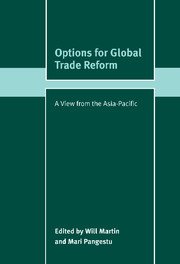Refine search
Actions for selected content:
10 results in Trade and Development

The China-Hong Kong Connection
- The Key to China's Open Door Policy
-
- Published online:
- 01 June 2011
- Print publication:
- 29 November 1991

The Third Revolution in the Chinese Countryside
-
- Published online:
- 04 August 2010
- Print publication:
- 18 April 1996

Agricultural Reform in China
- Getting Institutions Right
-
- Published online:
- 18 June 2010
- Print publication:
- 13 January 1998

The New Silk Roads
- East Asia and World Textile Markets
-
- Published online:
- 19 January 2010
- Print publication:
- 27 March 1992

The World Food Outlook
-
- Published online:
- 06 November 2009
- Print publication:
- 06 March 1997

Fiscal Decentralization in Developing Countries
-
- Published online:
- 09 October 2009
- Print publication:
- 11 March 1999

Achieving Industrialization in East Asia
-
- Published online:
- 06 October 2009
- Print publication:
- 10 November 1988

Financial Integration in East Asia
-
- Published online:
- 22 September 2009
- Print publication:
- 27 September 1999

Labour Market Reform in China
-
- Published online:
- 22 September 2009
- Print publication:
- 11 May 2000

Options for Global Trade Reform
- A View from the Asia-Pacific
-
- Published online:
- 22 September 2009
- Print publication:
- 27 March 2003
